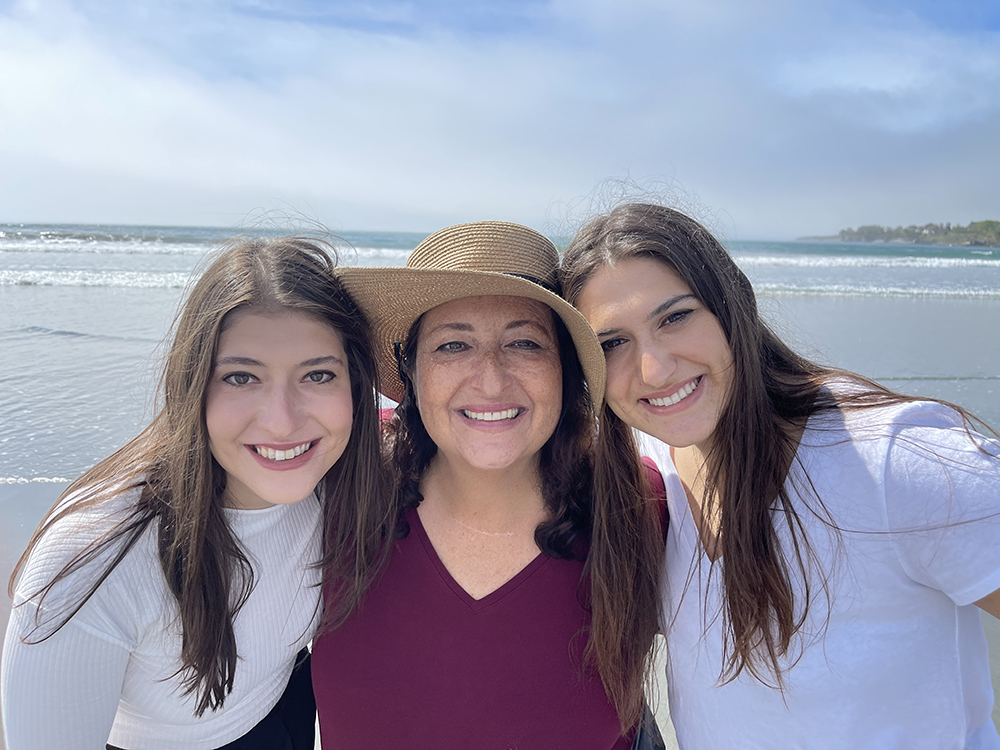Books have always been a huge part of Monica Brown’s life. First, it was reading as many as she could. As she got into her career, she was teaching them. And then one day, she wrote a book. The professor in the Department of English, who teaches Latinx, African American and U.S. multi-ethnic literature, is still reading, writing and teaching books, with the goal of introducing diverse and interesting people to children. Her latest books are She Persisted: Diana Taurasi and El cuarto turquesa / The Turquoise Room. She talked to The NAU Review about her career arc, the impetus for writing her first book and the influence of family in both directions—her mother, grandmother and two daughters—have had on her life.
Why did you start writing books?
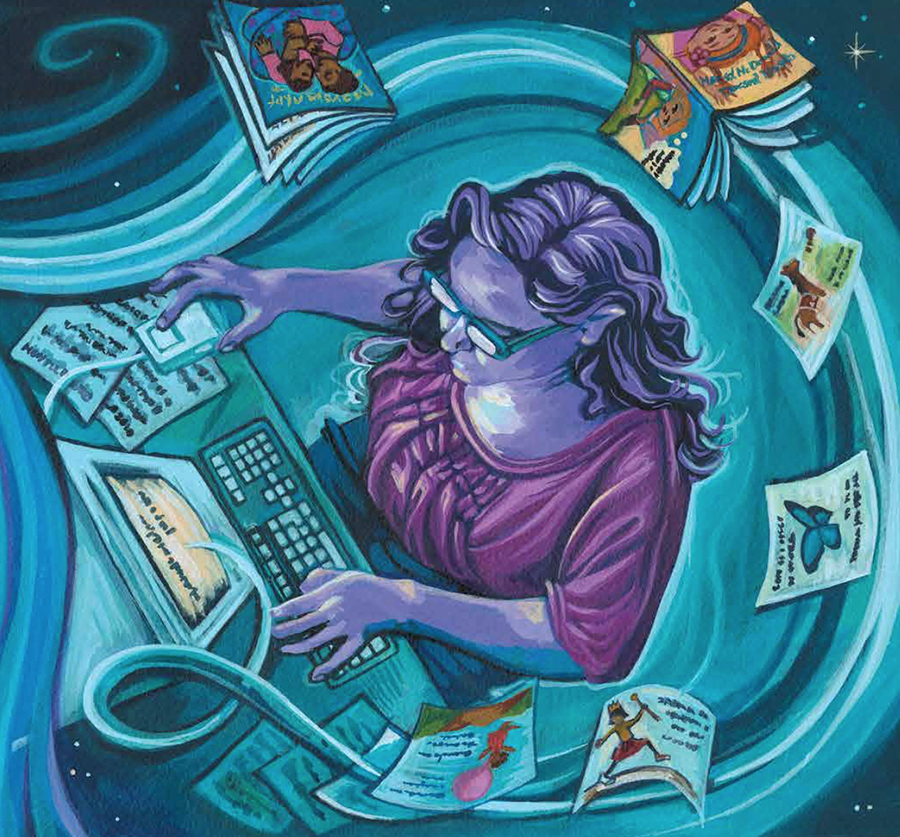
Before I was a writer, I was a reader—a voracious one. I’ve loved books since I was a little girl, and during a pretty challenging adolescence, books saved me. They were my escape, and they helped me imagine the type of life I wanted to lead. I read Joan Didion’s Salvador and got involved in political theater. I read Maya Angelou’s memoirs—I Know why the Caged Bird Sings, Singing and Swinging and Getting Merry Like Christmas and The Heart of a Woman—and was amazed at what one woman could do and be. Then one day, a youth leader gave me a copy of Gabriel García Márquez’s 100 Years of Solitude. I was spellbound. To me, the book was a sort of alchemy—creative magic! The novel spoke to me as a child of the Américas, as someone with a large complex family straddling two continents with passion and politics.
My path was set. I went to UC Santa Barbara a declared English major, and it was there that I moved from reader to writer, thanks to my professors and mentors. A particular professor, Carl Gutíerrez-Jones, took me aside in his Chicanx literature class and said, “Monica, have you thought about graduate school? Because you can write.” In fact, I hadn’t. Not even once. He helped me believe I could build a life as a teacher and writer—around words and the power of story. Another door was opened by a teaching assistant in a Middle Eastern politics course, who asked me what I wanted to do when I graduated. I smile remembering my response: “I want to use my degree and write.” He didn’t mock my naiveté, but rather asked if I knew any other languages. The daughter of a Peruvian immigrant, I shared that I spoke Spanish. As it turned out, my TA, a Ph.D. student in political science, was a former journalist who had spent four years working for an English-language weekly in Guadalajara. He connected me with his former editor, and my first job out of college was working full-time as a journalist in Mexico—a formative experience! On weekends, I taught an English language class at the University of Guadalajara and loved teaching so much that I decided to return to the U.S. for graduate school. My writing turned toward scholarship—literary and cultural criticism. My first book was a scholarly one on Chicanx and Puerto Rican literature, and I pursued literary and cultural criticism as an assistant professor at NAU.
The next iteration of my career as a writer evolved after I became a mother of two amazing daughters, Isabella and Juliana. There were stories I wanted them to know that did not yet exist. So I took Toni Morrison’s sage advice: “If there is a book that you want to read, but it hasn’t been written yet, then you must write it.” I wrote my first children’s book, a picture book biography, about the Chilean poet and educator Gabriela Mistral. It’s been a gift to teach U.S. Latinx literature and create it for children. I’ve loved the opportunity of introducing Pablo Neruda and Gabriel García Márquez’s work to children, alongside the stories of other heroic Latinx figures, to children!
Importantly, when I tell my students all they can do with their English major—the study of literature in historical context, critical thinking and writing—I mean it, and have examples from my own life.
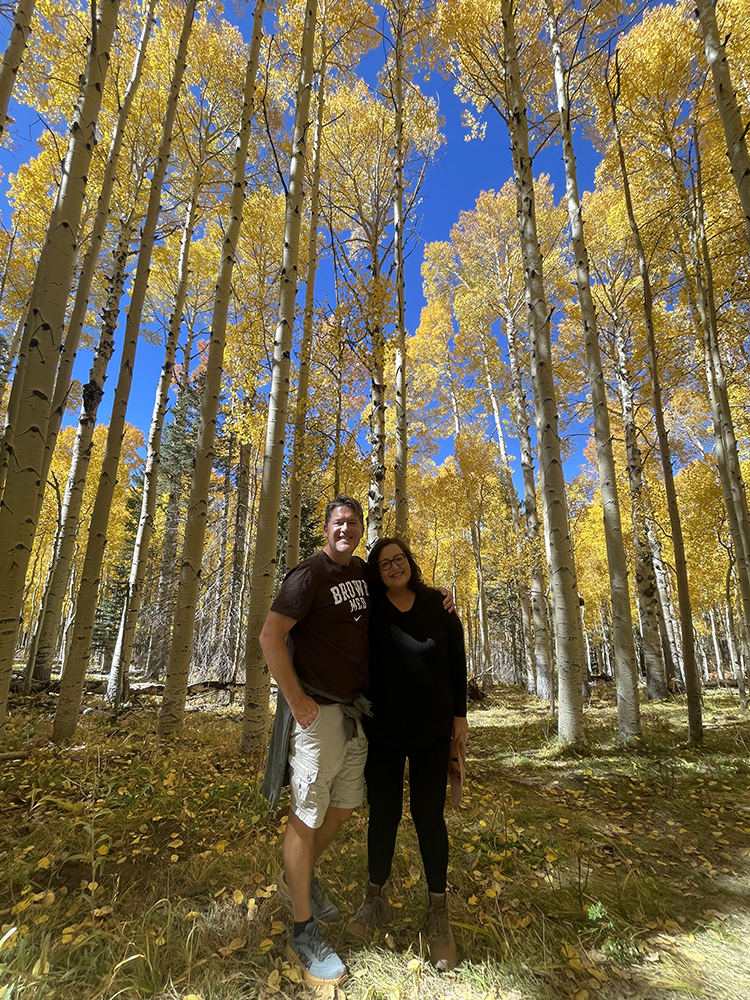
What is your favorite book that you’ve written?
Each of my children’s books has been special to me for different reasons. But one very special fictional picture book is Marisol McDonald Doesn’t Match/no combina, about a little girl learning to embrace all aspects of her identity and be herself, despite others’ expectations of conformity. It was earlier in my career and one of the most challenging to get published! And yet now, it’s a book that continues to resonate with children and is in its 18th printing. I’m delighted to say this picture book is currently featured on the story walks at Archuleta Park in Flagstaff and the Arizona Center in downtown Phoenix.
Other favorites include Waiting for the Biblioburro/Esperando al Biblioburro, inspired by real-life librarian Luis Soriano and my chapter book series starring Lola Levine, a fierce soccer-playing girl who just wants to be herself. I was (and still am) quite the fútbol fanatic😊.
You’re part of an interdisciplinary team aimed at reducing racial disparities in STEM—how and why did you get involved in that project?
In terms of why I got involved in this project, it’s interesting how much comes back to our experiential knowledge. I always struggled in math classes and did not get past algebra 2 in high school. And yet, I’m the mother of two young women in STEM fields. My oldest daughter, Isabella, is a third-year medical student, and my youngest, Juliana, is a civil engineer who is studying building technology in graduate school. I’ve witnessed their struggles, their achievements and the importance of mentoring, and I want to be part of supporting our students on their STEM journeys here at NAU. Working with my incredible colleagues on the grant has been a dynamic and exciting experience.
As a co-facilitator of NAU’s equity-oriented community of practice for STEM educators, I have been inspired by the care and commitment the faculty demonstrate for our NAU students. We have participants from mechanical engineering; the School of Informatics, Computing, and Cyber Systems; chemistry and biochemistry; the School of Earth and Sustainability; biological sciences; and the School of Forestry. These incredible researchers and teachers have shared goals: grow the capacity to recruit, retain and support STEM graduate students from historically excluded communities and improve outcomes for ALL our students.
Tell me about a significant childhood memory and how it has impacted your life today.
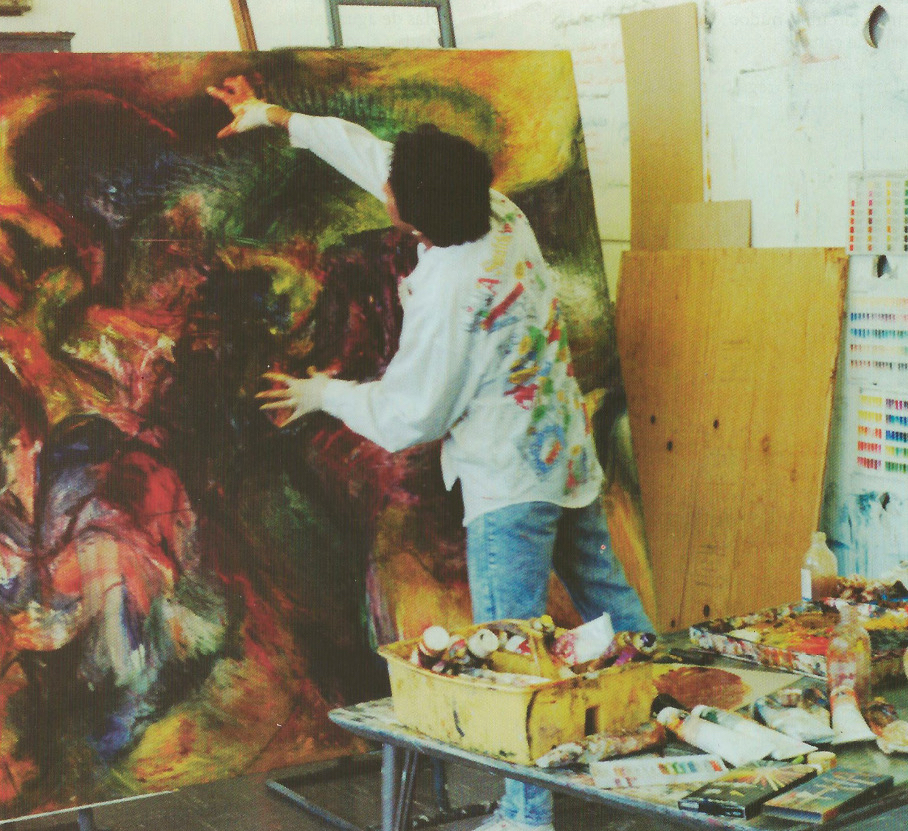
My most significant childhood memories all involve my mother, Isabel. She immigrated from Peru to the United States as a teenager and was my first and best model for living a creative life. She modeled what it meant to be an artist and a mother, and she modeled courage in the face of suffering. I recently wrote an essay about her. She always encouraged me to pursue adventure, and my passion for writing and teaching.
My mother suffered from ADPKD, and post-kidney transplant, she was diagnosed with liver cancer, related in part to the immunosuppressive drugs she took. Her own mother, my abuelita, died at 41 from the same disease. And yet my mother painted through it all and created powerful, beautiful things even in the face of suffering. As Frida Kahlo famously said, “Feet, what do I need them for if I have wings to fly!” So, my mom flew. The memory of my mother selecting a very beautiful head scarf to wear over her bald head to go to her MFA defense in painting, is seared into my mind. I too have ADPKD, and even when I was most sick and could barely function or leave the house, writing brought me some measure of peace—a sense that I could still do meaningful work—for children! I spoke publicly for the first time about my disease in support of National Donate Life Month last spring.
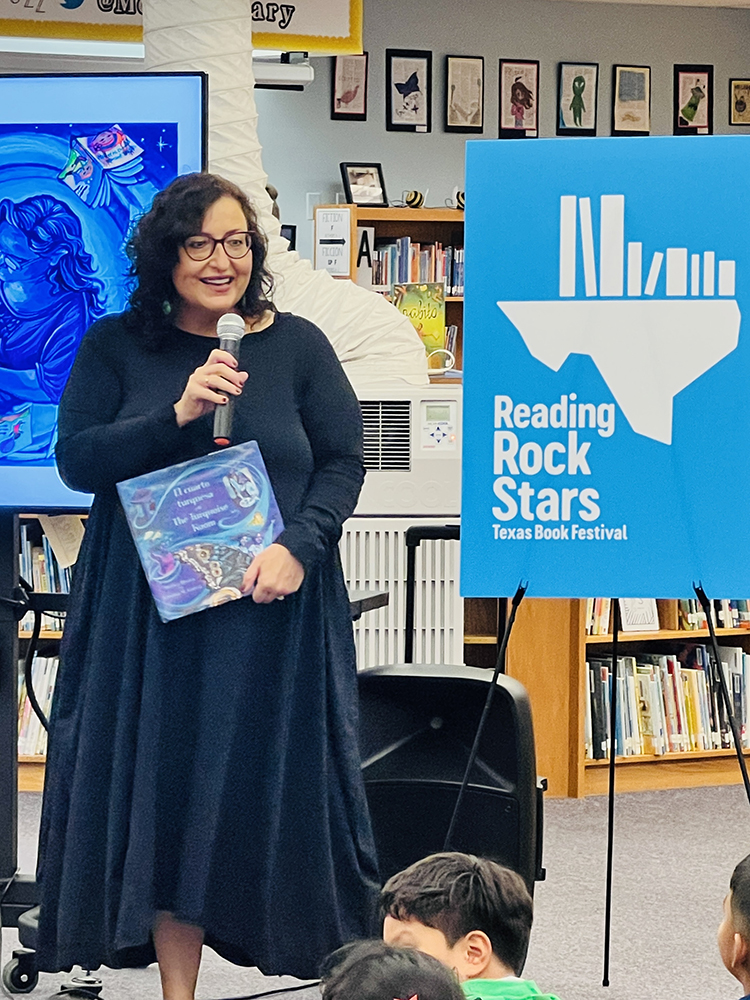
What have you been most proud of this week?
I just got back from the Texas Book Festival, and it was so energizing and fun! It is only very recently, and cautiously, that I’ve started to do in-person events again. Gathering with teachers, librarians and my writing community and hugging friends for the first time in years filled me with delight.
Sharing with students my new book, El Cuarto Turquesa/The Turquoise Room, was amazing. They engaged with my magic story about women who fly in the twilight of their dreams. The children repeated the book’s refrain in unison, noting that their “imaginations are big as the sky!” Sharing my own magical realist book for children the same week that the graduate students in my U.S. Latinx and Latin American Magical Realism course read and analyzed Cellophane by Peruvian-American novelist Marie Arana felt very right.
What is your favorite way to spend a day off?
My favorite days off always involve family—my daughters (and new son-in-law!) who live so far away and my husband, Jeff. We definitely linger over our family’s favorite beverage—coffee—and enjoy time outside and in the sun. I grew up in California so am always drawn to water of any kind—beaches, lakes and rivers. Living in Flagstaff for 24 years, however, I’ve become a hiker and so go “tree bathing” in our ocean of trees. But if I’m near the ocean—I will swim, no matter how cold! I am a polar bear.
What are three things on your bucket list and why?
Given how very sick I was less than four years ago, I am living my bucket list. I’m here and healthy and living in this beautiful, painful, wondrous world.
What is your philosophy in life?
I want to live with passion and compassion and love my family and community extra hard.
Meaningful work is important. Rest is important. Play is important. I’m always seeking some sort of balance between the three but have come nowhere near to achieving it. I’m pretty good at loving extra hard, though. Beyond my family and friends, love can look like service, it can look like activism, it can look like empowering others and protecting the most vulnerable.
What advice do you have for someone who wants to write a book?
Folks have different approaches to work, but for me, it’s discipline. Yes, the muse exists! Inspiration is everywhere! And yet when it comes to the execution of a book idea, the muse usually visits when I’m sitting down in front of my computer being intentional about the writing. Slow and steady work over as many consecutive days in a row as possible works best for me. I don’t work well when I’m stressed and anxious about a deadline.
In general, I don’t write on days I teach—it involves the same creative energy! But I try to build consecutive chunks of writing time into my schedule, even on
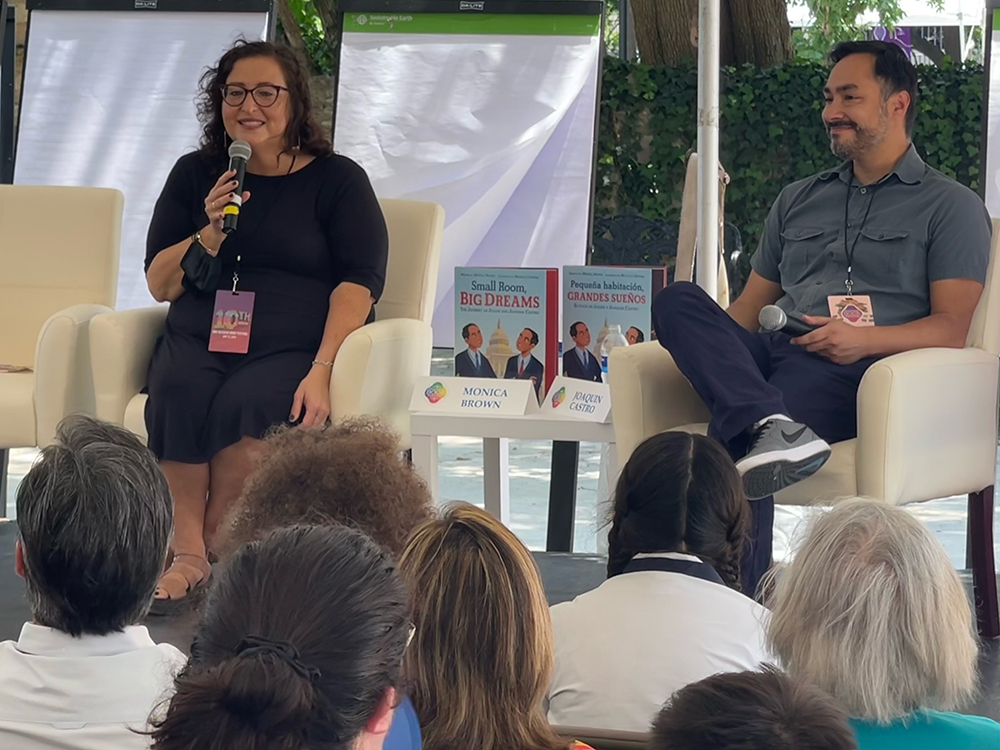
weekends and vacations, too. For me, short 2- to 3-hour writing blocks over five days is infinitely more valuable than a 10-hour writing day. For creative writing, the early morning works best. It’s easier to access the playfulness needed to write for children before the day starts with all its adult complications. But honestly, when things get chaotic, as they must, I will write whenever I can steal some time.
I also want to note that if you want to be a creative writer, get ready to experience rejection. One of my superpowers as a writer is that I don’t take rejection personally—this is NOT true in other parts of my life, by the way! I don’t let it erode my confidence. Find a place of self-belief, if you can, and surround yourself with people who believe in you.
And for inspiration, look to the poets! To celebrate the one-year anniversary of KNAU’s Poetry Friday, I spoke about the work poetry and art have to do in the world, channeling the words of Pablo Neruda, who said poetry—and I would add all literature, and the arts—is like bread. It sustains.
